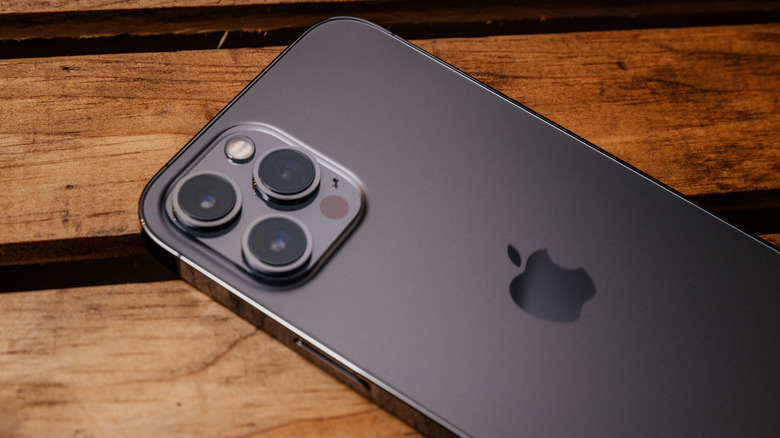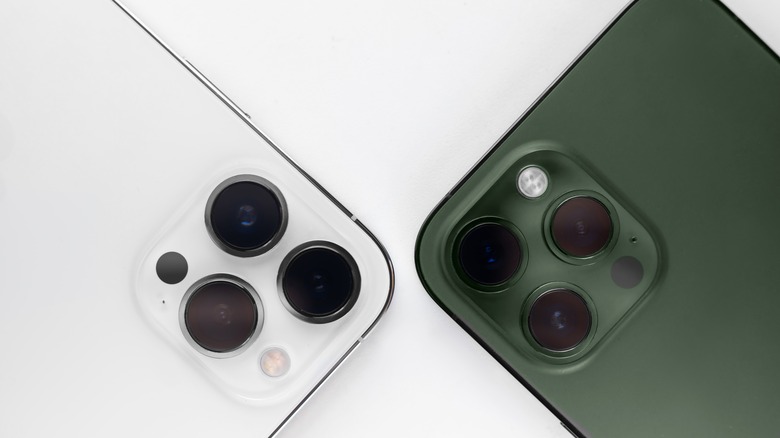The iPhone 14 Decision Is About To Get A Whole Lot Harder
Months before every iPhone launch, there is usually a flood of rumors that discuss the possible direction in which Apple would move with its newest phones. Often, these rumors are accompanied by leaked images of early iPhone prototypes. Given that Apple typically releases fresh iPhone models every September, we've been hearing a lot about the upcoming iPhone 14 lineup. Previously, we'd discussed the likelihood of these upcoming iPhones getting a redesigned notch design. This was followed up by another report that contradicted this claim. However, one iPhone 14 series-related rumor that has largely remained unchanged since we first heard of it centers around the model's all-important processor.
Earlier this year, noted Apple analyst Ming-Chi Kuo suggested the possibility of Apple reserving the company's next-generation smartphone-oriented chip — the A16 Bionic – for the higher-end models. He indicated that the lower-priced variants of the iPhone would continue to use Apple's existing A15 Bionic chip. While this report was initially viewed with skepticism, in his most recent report, Ming-Chi Kuo has only reiterated this claim. With Kuo having a stellar record of accurate Apple-centric predictions, there is a good chance that his claims may end up being true. Unfortunately, this also means that deciding which iPhone to buy may get even more confusing going forward.
Will the Apple A16 chip be restricted to higher-end models?
One aspect of the iPhone that helped it stand out among the crop of Android smartphones was the fact that even the lower-end devices used the same chip as the most expensive iPhone models. Take the case of the $699 iPhone 13 Mini and the $1,099 iPhone 13 Pro Max. Even with such a significant price difference, the iPhone 13 Mini has the same processing power as its more expensive sibling. If Ming-Chi Kuo is to be believed, this will likely change starting in 2022.
In a recent blog post, Kuo reaffirms that the company's upcoming A16 chip will be restricted to just two iPhone 14 models. While these two devices could be the iPhone 14 Pro and the iPhone 14 Pro Max editions, there is ambiguity over the chances of even the top variants getting the A16 chip. According to Kuo, Apple is seemingly doing this to increase the proportion of higher-end variants in its sales figures. Kuo claims that the top-tier versions of the iPhone typically constituted 40 to 50% of the sales. With this move, the company reportedly wants to increase that proportion to around 55 to 60%.
Aside from allowing Apple to mint even more money, this move is also likely to positively impact the revenues of companies that make components for the higher-end iPhone 14 models. Kuo's report highlights the manufacturers of the iPhone 14's camera components that will benefit from this move, including Sony, which makes the image sensors; Largan, which supplies the lenses; Alps, which handles the OIS functionality; and LG Innotek, which supplies the CMOS camera module.

